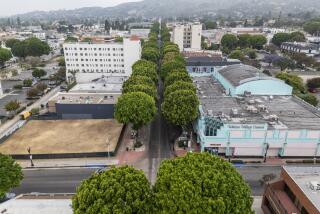During pandemic, trash and crime increased on Whittier Boulevard. Lowrider clubs said: Enough
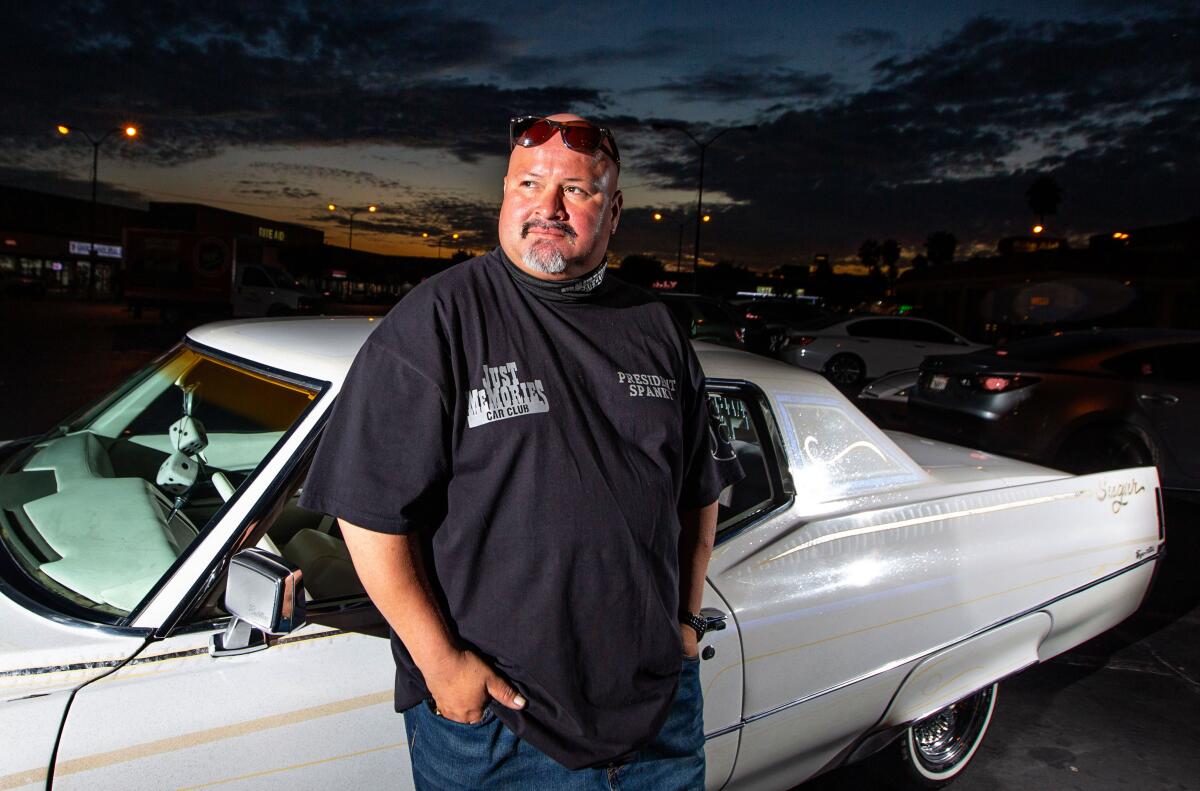
- Share via
As a boy growing up in East Los Angeles, Juan “Spanky” Ramirez lived for the weekends when his uncles would leave the family’s carne asada parties and invite him to cruise down Whittier Boulevard in East Los Angeles.
From the passenger seat, Ramirez saw the regular parade of chrome and florid paint jobs that brought worldwide fame to the street. And when the tíos flipped their hydraulic switches, and their shiny sedans rose high in the air, “it was the greatest feeling in the world.”
Now that he’s a 39-year-old father, a cruise down Whittier in his white 1970 Cadillac Coupe de Ville takes him back to those old-school days.
“I’ll be at work all stressed out and I could just get in the car and take off,” the Baldwin Park resident said. “It’s like therapy.”
But over the summer, his asphalt Eden was shattered.
On Aug. 2, a man hit another man over the head with a blunt object during a brawl in a parking lot off Whittier Boulevard and then punched a woman before firing three rounds of gunshots into the air. It was the lowlight of a summer on the boulevard that saw it crowded with cruising like it hadn’t seen in years.
The doldrums of the pandemic, which had turned so many people into shut-ins, seemed to have brought others to the boulevard. Not all behaved; empty parking lots were stained with graffiti or littered with trash. The smell of urine permeated the air.
For Ramirez and his friends, that was enough.
Two days later on Facebook, he urged fellow lowrider aficionados to stage a boycott of sorts: No more cruising on the street for a month.
“It’s sad because we are the last of the generation that can keep this culture alive,” he wrote. “So in an effort to save Whittier Boulevard, we’re going to put a pause on it.”
It was a crucial test for Ramirez and the Los Angeles Lowrider Community, a coalition of 15 car clubs in the region. The group formed about a year ago to clean up the image of their scene, a place frequented by those who liked their rides low and slow that was long perceived by law enforcement and the public as somehow sketchy.
“We’re not forcing anyone to do anything they don’t want to do,” said 47-year-old Jesse Flores of the Elegants Montebello car club. “All we did is ask, ‘Hey don’t come out and stay away for a little.’ It’s a free country, they can do what they want to do. That’s pretty much how we’re running it.”
“And surprisingly,” he added, “it worked.”
On Aug. 29, the Los Angeles Lowrider Community ended its voluntary exile from Whittier Boulevard with a cruise to commemorate the 50th anniversary of the Chicano Moratorium and the killing of L.A. Times columnist Ruben Salazar. Flores said he’d taken a cruise once in a while in his “regular” car during August to see if people respected the group’s request, and saw one or two stragglers at most.
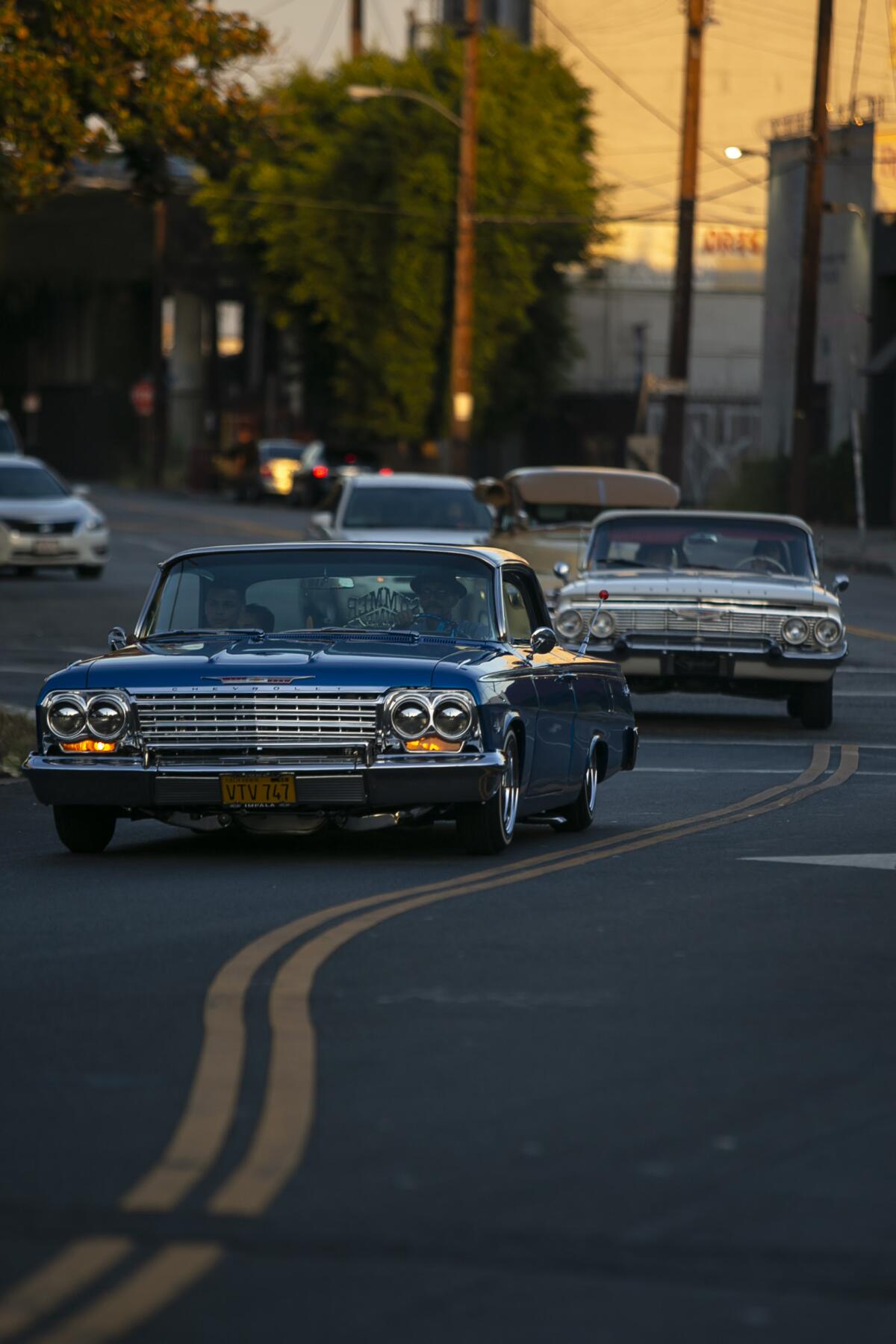
“We don’t need law enforcement to tell us when something’s wrong,” Ramirez said. “Whatever happens on Whittier Boulevard, it’s our history.”
The Los Angeles Lowrider Community’s effort may have been the first self-imposed ban on cruising in the boulevard’s history, but it’s certainly not the first time East L.A. has seen a stop in the pastime.
In 1979, police barricaded the streets along a mile-long stretch of Whittier Boulevard between Atlantic Boulevard and Eastern Avenue every Friday, Saturday and Sunday. Nine years later, the L.A. City Council passed an ordinance to tighten restrictions on cruising, limiting cars to one round trip every six hours on the same street.
As recently as 2017, L.A. County Supervisor Hilda Solis passed a motion to look into increased enforcement for nonpermitted cruising events.
But the lowriders always came back.
“The approach has always been enforce, enforce, enforce,” said Capt. Salvador Suárez, commander of the California Highway Patrol’s East L.A. station. “Well, if that’s the approach that’s been taken, and it’s still going on, is there another approach we could possibly take? I don’t know the answer, but I’m willing to listen to people.”
Suárez has allowed the Los Angeles Lowrider Community to meet at his station. In a room with chairs six feet apart and tables with hand sanitizer, the group has meet with the CHP, the L.A. County Sheriff’s Department, a county lawyer, the county Department of Public Works and others.
During the first meetings in early August, law enforcement officials showed the lowrider group pictures and video of private parking lots along Whittier Boulevard being trashed.
Suárez said the Los Angeles Lowrider Community members voiced concerns that they had no other outlet to gather because the pandemic had closed beaches, parks and other recreational spaces. He said that he understood that the people who had littered and vandalized local businesses in recent months might not be part of the car clubs, but “it doesn’t matter. It’s people coming to the boulevard because of you.”
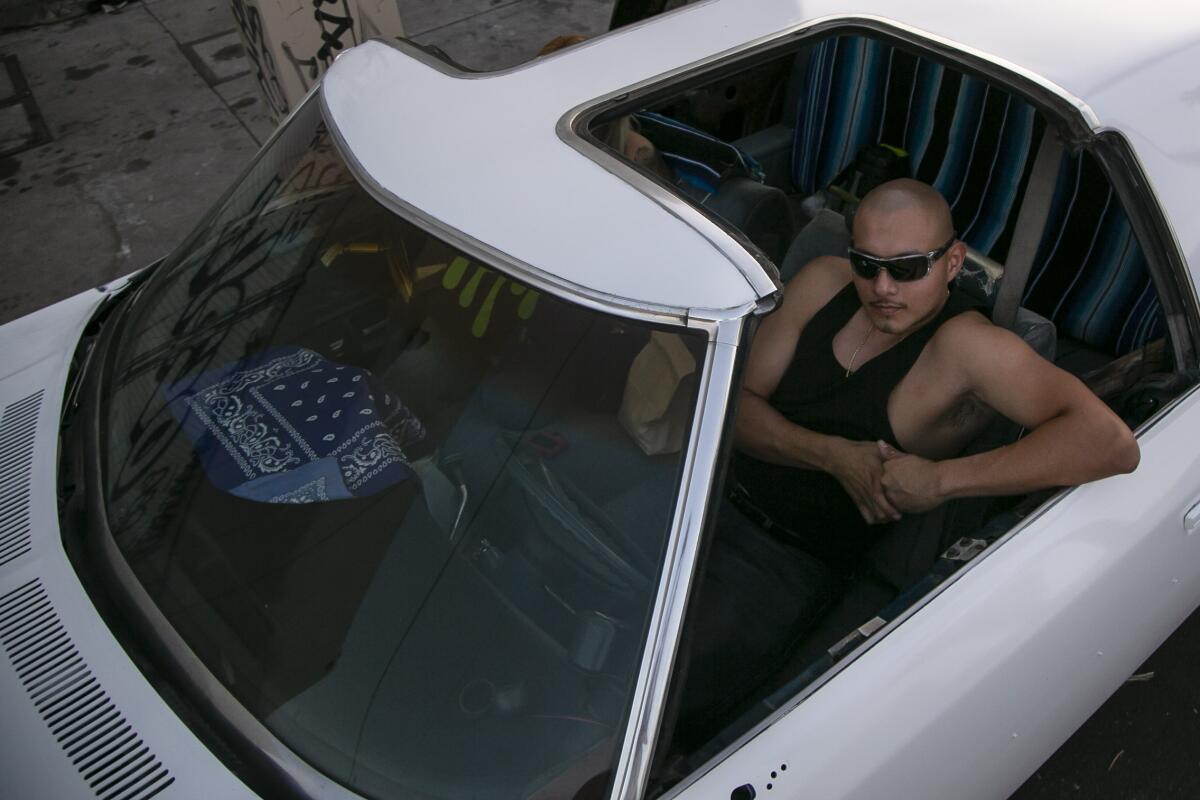
Bad activity on Whittier Boulevard did appear to wane after the Los Angeles Lowrider Community’s proclamation, Suárez said. Local officials and law enforcement are expected to meet with Eastside merchants soon to hear them out. The hope is for the cruisers and the shop owners to converge and go from there.
Though this may be a new generation, it’s not the first time L.A. lowriders have tried to formally organize.
In the early 1980s, the West Coast Lowrider Assn. brought a group of about six car clubs together with similar goals in mind, said 65-year-old Gloria Ruelas, a member of the Dukes car club, one of Los Angeles’ first lowrider clubs. The group was instrumental in organizing car shows for MEChA — Movimiento Estudiantil Chicano de Aztlán — at universities such as UCLA and East L.A. College.
Ramirez didn’t know about attempts by the West Coast Lowrider Assn. or any other group to unify lowrider clubs in the area. But he’s excited to see his community come together like never before.
“We don’t apply pressure to nobody,” Ramirez said. “We’re just trying to get a vote of, ‘What do you think is best for the rest of the community?’ And if we do it together willingly, then everything works out a lot better.”
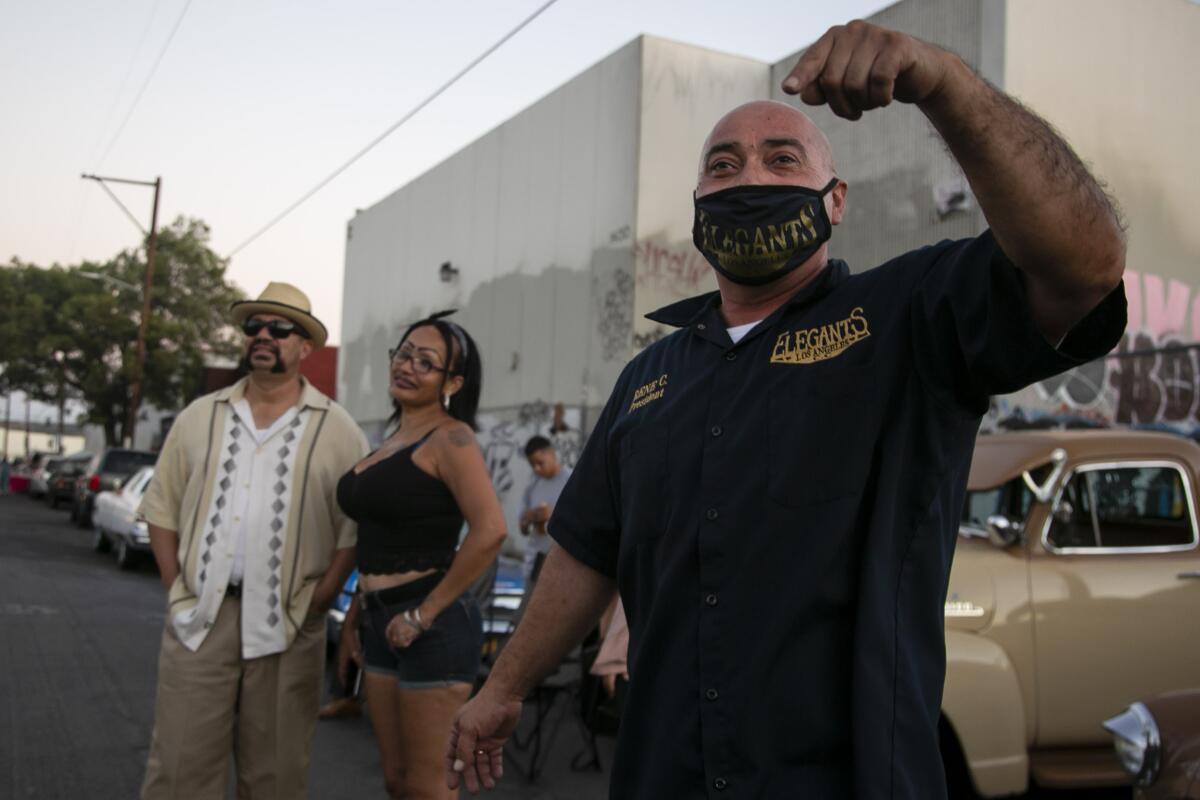
But for Los Angeles Lowrider Community members, a ban on cruising Whittier Boulevard didn’t mean a ban on cruising everywhere. Still needing to satisfy their lowrider itch, clubs held a private, invitation-only event on 15th Street in downtown Los Angeles about a week after the pause was announced.
“Whittier is our culture,” said Rene “Sir. Chato” Castellano, a member of the Elegants car club. “But unfortunately right now there’s a lot of negativity going on [there].”
As the sun set behind the palm trees and downtown L.A. skyline, cars rolled through and sunk to the ground. Sparks flew as bumpers scratched the street.
Sitting on lawn chairs lined on each side of the street, attendees ate barbecue as their homies bumped hip-hop and rap from their cars. Kids pedaled slowly on bikes, their seats low and handlebars high above their shoulders. Many weren’t wearing masks, though some quickly pulled them out when crossing the street to greet members of other car clubs with fist bumps.
A Los Angeles Police Department vehicle slowed its pace when it passed, eyeing the group.
Castellano said he told the cops that they’d move if they wanted them to. They’re not trying to cause any trouble.
“We’re here,” he said, “for unity.”
More to Read
Sign up for Essential California
The most important California stories and recommendations in your inbox every morning.
You may occasionally receive promotional content from the Los Angeles Times.

